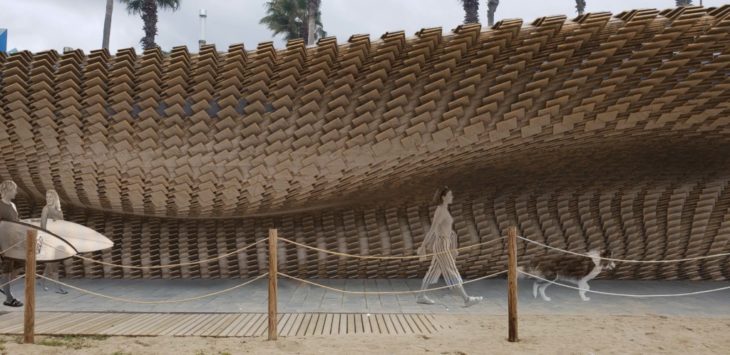
Sea Wind Shutters
Sea Wind Shutters is a purposed installation located on the Barcelona Beachfront Passageway, to reimagine the current unwelcoming industrial path that corrals its visitors. Using panels in a wavelike motion, Sea Wind Shutters generates a soft ambient noise from the motion produced from the wind.
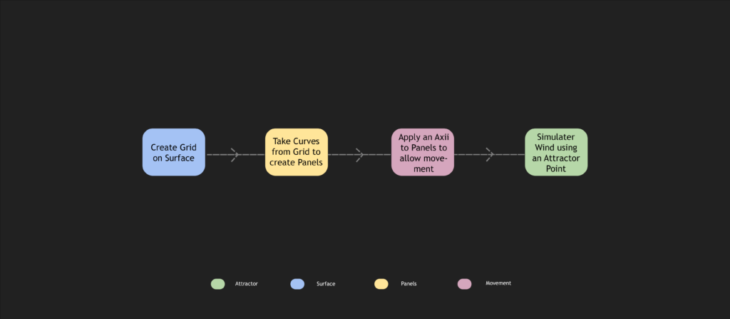
Pseudocode
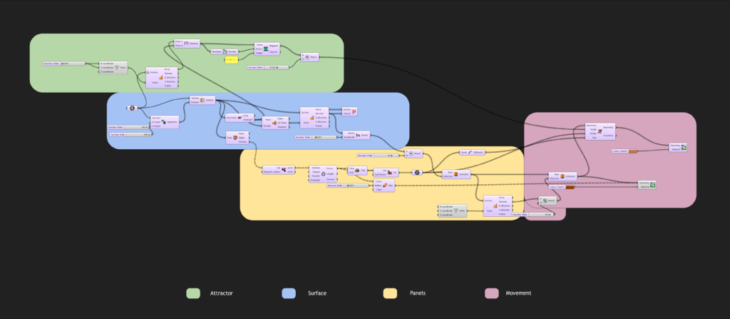
Pseudocode
- First we went about constructing a surface on which to form our parametric structure.
- Once we had a surface we knew that in order to assign extruded panels to the surface we needed to break down the surface into a grid.
- Using the divide domain component along with the isotrim tool the surface split into segments in which we could extract vertices, curves and centroids.
- After isotrim, we used the area component to take the centroid in which to plug into a closest surface point component.
- Next the isotrim surface was then assigned to the closest surface point component in which to extract uv points on the isotrim surface.
- Knowing that these points rested on the segmented surface of the isotrim we were able to discover normal vectors of those segments. Giving us the correct direction of extrusion.
- After discovering the direction in which we could extrude our panels, we needed to assign a geometry in which to extrude from.
- Using the Explode Brep tool we were able to create a list of all the vertices in the surface.
- With that list of vertices we dispatched in order to generate a pattern from which to interpolate curves.
- These curves then each had their own branch in which we needed to compile back into a list.
- We flattened the branches with the flatten tree component in which we used a cull pattern tool on.
- By culling the pattern of the list we were able to extract a pattern of curves that we extruded our panels from.
- We referred back to the normal vectors that we had found from evaluating the surface of the isotrim and used them to assign a direction and amplitude for our extrusions.
- Realizing the panels had no thickness to them, we took the extrusions we had just created and evaluated their surfaces in order to extract a normal vector for each panel to be thickened by.
- Finally in order to achieve the reactivity of our parametric skin, we chose to evaluate the surface of the original geometry and establish an attractor point on it.
- Using the distance from the attractor point and the centroids taken from the earlier area component we compiled a list of values that we used to tilt the panels along their axii.
- After tilting the panels we assigned a custom preview component to the geometry in order to view the final result.
Wind Effect
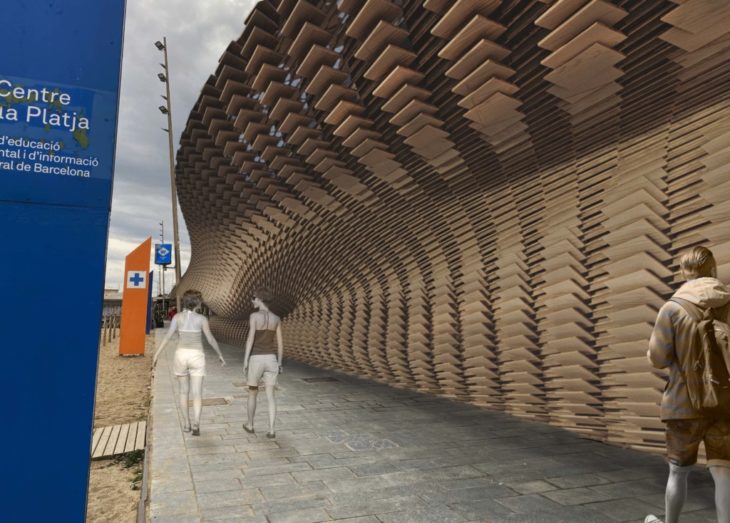
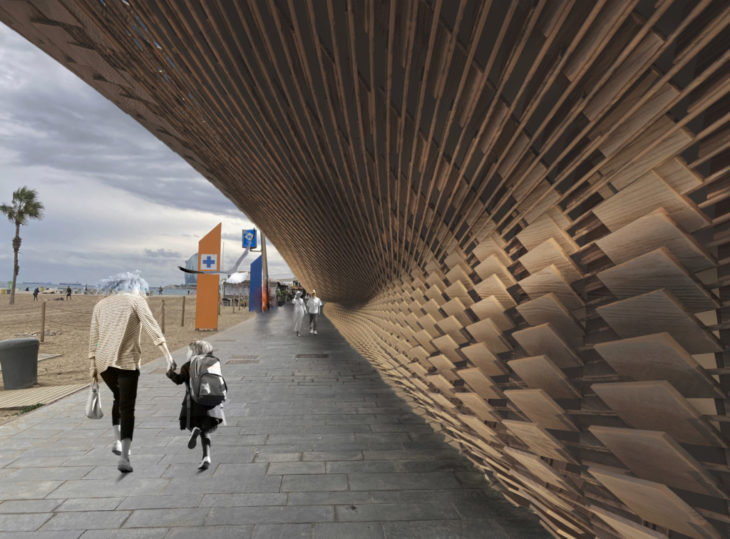
Sea Wind Shutters – Computational Design- Basics is a project of IAAC, Institute for Advanced Architecture of Catalonia developed at Master in Advanced Architecture in 2021/2022 ; Students: Jack Davis / Rachel Busche ; Faculty: David Andres Leon / Ashkan Foroughi Dehnavi ; Assistant Laukik Lad / Uri Lewis Torres